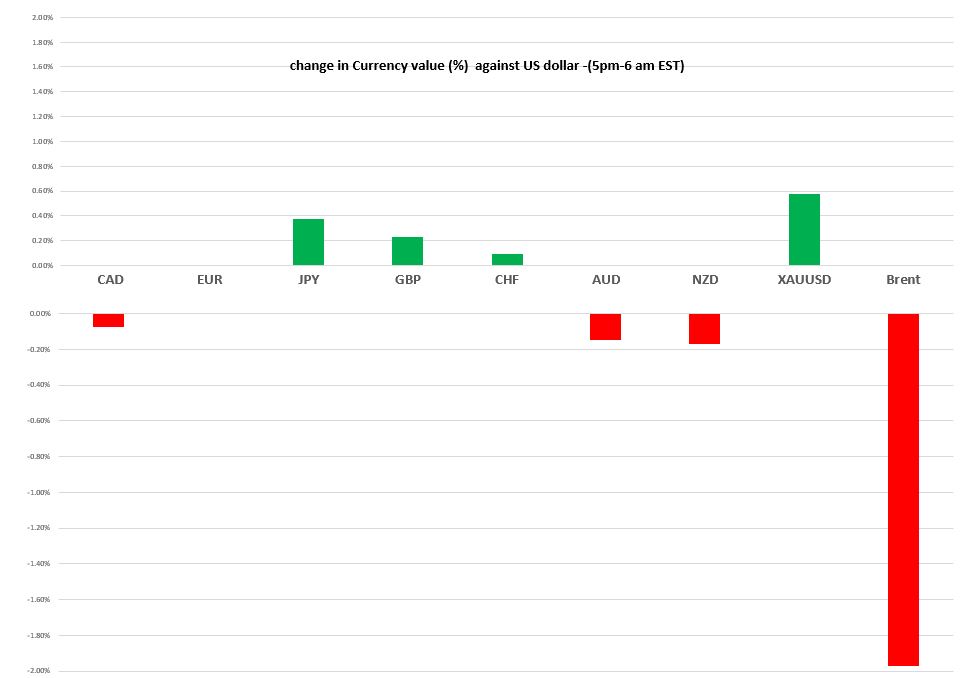
Fun with figures
February 13, 2020
USDCAD open (6:00 am EST) 1.3258-62 Overnight Range 1.3243-1.3264
US January CPI rose 2.5% y/y compared to the 2.3% forecast while CPI, ex-energy and Food rose 2.3% y/y (forecast 2.2%)
Chart: 12 month change CPI

Source: US Bureau of Labor Statistics.
China reported close to a 10-fold increase in new confirmed coronavirus (covid-19) cases. Traders, who were just becoming accustomed to a new risk-friendly environment, soiled themselves. Gold prices rallied, oil prices dropped, JPY and CHF gained, the commodity currency bloc sank, and US Treasury yields, eased. The risk aversion pressure was diminished when markets realized that the increase in cases was due to a change in methodology to diagnosis. Health officials can identify more cases earlier, begin treatment sooner, which should lower the death rate.
The US dollar is down across the board except against EUR since Monday’s New York open. The overnight FX price action is just noise with the greenback opening on a mixed note.
Chart: Currency gain/loss (%) against the US dollar from New York close to New York open

Source: Saxo Bank/IFXA
FX Recap and outlook: EURUSD continued its February slide and is hovering above support in the 1.0860 area. Eurozone recession fears due to fall-out from the US/China trade spat and Trump’s tariff threats against the EU weighed on the single currency. Those fears are exacerbated by coronavirus worries which the EU described as a “key downside risk “to the economy. The impact is evident in yesterday’s weak industrial production numbers. Also, the Mobile World Congress in Barcelona is cancelled due to covid-19. Euro-area carmakers are warning of part shortages from China. Despite that, the European Commission forecasts EZ Real GDP in 2020 at 1.2% y/y (unchanged from the previous forecast) and inflation at 1.3% y/y(previous 1.2%).
GBPUSD is trading at the top of its overnight 1.2946-82 range, underpinned by RICS Housing Price Balance survey which rose 17% in January. That news helped to offset, upcoming EU trade negotiation worries.
USDJPY dropped from 110.08 to 109.62 on the back of safe-haven demand for yen following the revised methodology for identifying covid-19 cases. The drop was exacerbated by a dip in US 10-year Treasury yields to 1.597% from 1.635%.
Oil prices dropped in Asia alongside the increased covid-19 cases. Opec (yesterday) and IEA (this morning) lowered their forecasts for 2020 crude demand growth, which was expected. Traders also ignored this week’s news that US crude inventories rose again.
Instead, they are buying oil in hopes that Russia, agrees with Opec’s call for additional production cuts.
USDCAD traded lower, tracking broad US dollar sentiment. Bank of Canada Governor Stephen Poloz, stole a page from Fed Chair Powell’s speech-book and told an Australian audience that the Canadian economy “was in a good place.” He also said that rate cuts to support a slowing economy need to be balanced against financial vulnerabilities.
USDCAD Technical Outlook
The intraday technicals are bearish following the break below 1.3290 but the downside is contained by support in the 1.3230-40 area. A break below 1.3230 risks further losses to 1.3140. A break above 1.3290 argues for renewed 1.3240-1.3340 consolidation. For today, USDCAD support is at 1.3230 and 1.3210. Resistance is at 1.3290 and 1.3330. Today’s range 1.3230-1.3290
Chart: USDCAD 4 hour

Source: Saxo Bank





